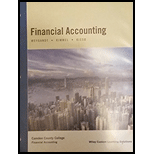
Concept explainers
(a)
Note receivable:
Note receivable refers to a written promise by the debtor to the creditor for the amounts to be paid in future with interest. This written promise is issued by a debtor or, a borrower to the lender or, creditor. Notes receivable is an asset of the business.
Interest on note:
Interest on note is the amount charged on the principal value of note, for the privilege of borrowing money. Interest is to be paid by the borrower, and to be received by the lender.
Dishonor of notes receivable:
When the maker of the note, fails to pay the note in full, to the payee on the due date, then it is referred to as the dishonor of the notes receivable.
If the payee expects the collection of the notes receivable in the future, then the amount of principal and interest on the note will be debited to the accounts receivable. On the other hand, if the payee has no hope on the collection of the note in the future, then the face value of the note will be debited to the allowance for doubtful accounts.
(a)
To prepare: The
(b)
To prepare: The journal entry in the books of Company M, to record the dishonor of Company C’s note with expectation of collection.
(c)
To prepare: The journal entry in the books of Company M, to record the dishonor of Company C’s note with no expectation of collection.
Want to see the full answer?
Check out a sample textbook solution
Chapter 8 Solutions
FINANCIAL ACCOUNTING W/WILEY+ >IP<
- The installment method of revenue recognition is primarily used for_. (a) Service contracts (b) Sales with extended payment terms (c) Construction projects (d) Consignment sales MCQarrow_forwardPlease explain the correct approach for solving this general accounting question.arrow_forwardPlease provide the answer to this general accounting question using the right approach.arrow_forward
- Sullivan Manufacturing estimates that overhead costs for the next year will be $3,200,000 for indirect labor and $480,000 for factory utilities. The company uses machine hours as its overhead allocation base. If 160,000 machine hours are planned for the next year, what is the company's plantwide overhead rate?arrow_forwardCould you help me solve this financial accounting question using appropriate calculation techniques?arrow_forwardCan you solve this general accounting problem using accurate calculation methods?arrow_forward
- Can you demonstrate the accurate method for solving this financial accounting question?arrow_forwardCan you solve this financial accounting question with the appropriate financial analysis techniques?arrow_forwardI need help solving this general accounting question with the proper methodology.arrow_forward

 AccountingAccountingISBN:9781337272094Author:WARREN, Carl S., Reeve, James M., Duchac, Jonathan E.Publisher:Cengage Learning,
AccountingAccountingISBN:9781337272094Author:WARREN, Carl S., Reeve, James M., Duchac, Jonathan E.Publisher:Cengage Learning, Accounting Information SystemsAccountingISBN:9781337619202Author:Hall, James A.Publisher:Cengage Learning,
Accounting Information SystemsAccountingISBN:9781337619202Author:Hall, James A.Publisher:Cengage Learning, Horngren's Cost Accounting: A Managerial Emphasis...AccountingISBN:9780134475585Author:Srikant M. Datar, Madhav V. RajanPublisher:PEARSON
Horngren's Cost Accounting: A Managerial Emphasis...AccountingISBN:9780134475585Author:Srikant M. Datar, Madhav V. RajanPublisher:PEARSON Intermediate AccountingAccountingISBN:9781259722660Author:J. David Spiceland, Mark W. Nelson, Wayne M ThomasPublisher:McGraw-Hill Education
Intermediate AccountingAccountingISBN:9781259722660Author:J. David Spiceland, Mark W. Nelson, Wayne M ThomasPublisher:McGraw-Hill Education Financial and Managerial AccountingAccountingISBN:9781259726705Author:John J Wild, Ken W. Shaw, Barbara Chiappetta Fundamental Accounting PrinciplesPublisher:McGraw-Hill Education
Financial and Managerial AccountingAccountingISBN:9781259726705Author:John J Wild, Ken W. Shaw, Barbara Chiappetta Fundamental Accounting PrinciplesPublisher:McGraw-Hill Education





